MARKET OVERVIEW
According to Metastat Insight, the global wind farm heavy lifting and haulage market has recently emerged as a developing trend with the growth in expanding renewable energy initiatives being implemented globally. The establishment of wind farms shows significant demand for a more sustainable energy solution and added pressure from ambitious national carbon emission reductions and replacement for cleaner sources of energy. As such, there is a much greater need for specialized heavy-lift and haulage operations to support the transportation, installation, and maintenance of massive wind turbines and other critical equipment. The sheer size and complexity of these wind farm components require very high precision in handling and transport methods for maximum efficiency and safety in every phase of a project. This market is an essential part of the successful execution of wind power systems and will continue to grow with further global energy policies' shift toward increasing renewables.
The main drivers of the wind farm heavy lifting and haulage services market are the physical demands of lifting and haulage towering turbines and expansive blades in remote or challenging locations. Such complex logistics require heavy-lift cranes and specialized transportation vehicles to move and position massive equipment pieces. The market for this sector has developed over time, as wind turbine technologies have improved-thus, where turbines grew bigger and more complex. Modern wind turbines can reach heights greater than 100 meters tall, as each blade is up to 60 meters long. Special equipment must be used in handling exceptional weight and size. Thus, the development rate requires a continued adaptation change within the heavy lifting and haulage industry so as not to stay behind such rising demands. Market players in this market are investing in latest cranes, hydraulic trailers, and other state-of-the-art technologies to meet the specific demands of wind farm logistics, and they are also perfecting strategies for reducing downtime and costs associated with transportation and installation.
The other key thrust that is affecting the Global Wind Farm Heavy Lifting and Haulage market is the urge to establish offshore wind farms, which leads to added complexity. Offshore installations, some placed miles off the coast, require an equipment and skills set that is well balanced between precision and resilience so as to ensure that turbines are held fast in open waters. Therefore, specialized vessels fitted with high-powered cranes become a necessity of moving and installment of turbines on the seabed for jobs such as these projects. This is a process that not only necessitates highly skilled human resources but also demands advanced technology able to withstand the harsh marine conditions. In turn, heavy-lifting and haulage companies are investing in equipment and training to build proficiency in the sector, which is going to become even more integral to the general market as offshore wind power becomes increasingly popular.
Environmental concerns also make up a significant portion of this market, with companies aiming at sustainability and reduced carbon footprint in their heavy lifting and haulage activities. More players opt for fuel-efficient vehicles and cranes, more electric-powered machinery, and plan logistics in strategic ways that have fewer trips on the transport of equipment. The embracing of sustainable practices then puts the industry not only in line with regulatory demands but also nicely in line with the broader goals of the wind energy sector. Given this, it means that the logistical part of the wind farm deployment moving in harmony with the broader objectives of clean energy further reinforced the role of heavy lifting and haulage as a keystone in the successful growth of the wind power industry.
Competitive rivalry in the Global Wind Farm Heavy Lifting and Haulage market has also increased as companies look for ways in which they can improve their efficiency, operation, safety, and technologies. The increasing demand for wind power is forcing heavy lifting and haulage firms to come up with very specialized solutions, capable of being adapted to various kinds of logistical challenges-while maintaining from land-based projects to offshore installations. At the same time, they try to keep costs effective while somehow balancing the cost of high-value specialized equipment with the logistical burden imposed by transporting large turbine components. While galvanizing technological solutions and honing their operations, firms in this market segment are not just meeting rising demands across the wind power sector but are also striving to set new standards for efficiency, safety, and environmental responsibility.
The Global Wind Farm Heavy Lifting and Haulage market, as depicted by Metastat Insight, is one that readies for growth as consumption of renewable energy increases in the globalized world today. As wind energy rapidly replaces fossil fuel consumption, so will the industries required to support such an industry: a logistics industry. From transporting colossal turbine components overland to navigating complex offshore installations, the challenges inherent in this market drive constant innovation and improvement within the heavy lifting and haulage sector. As countries work towards ambitious renewable energy targets, reliable, efficient, and sustainable heavy lifting and haulage services will be critical for the future of wind power, making a far more sustainable energy landscape for decades to come.
Global Wind Farm Heavy Lifting and Haulage market is estimated to reach $5,143.3 Million by 2031; growing at a CAGR of 2.9% from 2024 to 2031.
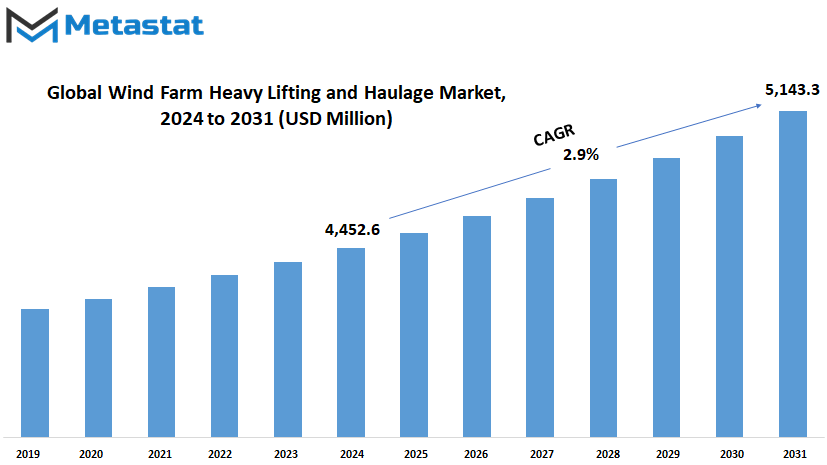
GROWTH FACTORS
The Global Wind Farm Heavy Lifting and Haulage market will experience tremendous growth as renewed attention is now being paid to mainstream renewable energy so as to meet global energy needs. Onshore and offshore wind farms are now becoming an integral part of a sustainable energy strategy. As such, the growth is more pronounced by a mounting global requirement for renewable energy infrastructure, specifically in the context of wind power. Countries around the world are expanding their wind farm networks, and that simply requires a lot of heavy lifting and transportation services. With turbines getting larger to make them more efficient, the industry needs more sophisticated equipment and better technical know-how to be able to lift those oversized components safely and effectively.
Of course, one of the biggest influencers for the need of more powerful and precise lifting solutions relates to the trend where size increments of turbines increase. Modern turbines, designed to produce higher energy output, are larger in terms of blades and much heavier nacelles that call for a lot of specialized equipment to be moved into sites for installation. These advancements in turbine technology keep raising the bar for industry requirements to a whole new level. Companies in this industry are nowadays investing in new forms of cranes, transport vehicles, and lifting equipment that can handle such large capacities and even difficult environments.
Despite such expansion opportunities, some features would restrain this market. Among the most pertinent challenges would be the high cost of operation incurred in heavy-lifting and transportation services related to the wind farm industry. Long-distance transportation, especially to sites located far from towns and most wind farm areas, requires much resources and long-time planning. More than that, regulatory barriers could also raise the logistics of transporting big turbines as complex and costly because of many permissions and requirements for safety measures. Another challenge is the lack of specialized equipment and personnel who would do the heavy lifting, particularly in inaccessible areas. Novice practitioners and dearth of high capacity lifting devices will delay activities and increase costs. These factors may delay the increased speed of wind energy projects, especially when regional infrastructure and training for heavy lifting are not fully developed.
Over the coming years, emerging advancements in lifting technology and new designs for equipment are set to unlock new growth avenues for the Global Wind Farm Heavy Lifting and Haulage market. Offshore and onshore installations are to be tailored innovations that shall empower the sector to tackle some of the current logistical as well as technical challenges. Improved lifting equipment that is not only safer but also more efficient should permit the free running of large projects, cutting costs, and making large-scale wind energy projects easier to execute. This in turn is going to fuel steadily the demand for heavy lifting and haulage in the construction of wind farms as worldwide efforts shift towards renewable energy and a cleaner future.
MARKET SEGMENTATION
By Equipment Type
The Global Wind Farm Heavy Lifting and Haulage market is growing because of the increased emphasis on renewable energy, along with increasing the number of wind energy projects around the world. An emerging area for a country in its way to meet environmental goals, and to minimize dependence on fossil fuels, is wind energy. This has led to heavy lifting and hauling and special equipment for wind farm construction and maintenance. This special equipment makes transportation and installation of large components such as turbine blades, towers, nacelles, or even entire turbines simpler and efficient. Other necessary equipment to transport such heavy structures over long distances and nasty terrains from manufacturing sites to the wind farm locations include a transport vehicle with a heavy truck.
Noteworthy are the requirements for larger capacity cranes to construct the heavy towers and the securing of blades onto the turbine. Hydraulic jacking systems and platform trailers are also in high demand because they offer some level of precision and stability in handling very sensitive and heavy loads, including nacelles and blades. The tower and blade trailers are special transportation equipment designed to hold these long, heavy blades, sometimes growing up to 60 meters in length. There are also support vehicles that assist in moving the elements around, orienting them, as well as balancing when lifting and moving them. In the future, as it is predicted by lines of technological progress, demand for this equipment will continue to grow and surge to accommodate the new machines and tools in order to achieve efficiency in production and save costs.
The innovations will lead to further stronger and flexible lifting systems, and trailers able to carry greater loads as well as heavier loads. There is a possibility that automation and smart technologies could also have a role in this in enforcing safety and accuracy in transporting and installing. Critical for these size and capacity-growing wind turbines will be more solid equipment able to handle heavier parts in greater accuracy. Increasingly, offshore wind farms on sparsely erected structures will require further high-tech hauling and lifting. All the waves pose challenges in logistics for offshore installations, and the need for equipment which can work safely at sea. Therefore, heavy-duty trucks and support vehicles equipped for these conditions will be required, and manufacturers should respond with tailor-made solutions.
Overall, the outlook for the Global Wind Farm Heavy Lifting and Haulage market seems rosy, owing to continuous innovations and strong commitment to clean energy. Since countries are adopting wind power, demand for specialized equipment that can handle heavy wind turbine components with efficiency and safety will rise. Consequently, in the future, this industry will appear to be of critical importance and dynamic in nature.
By Lifting Services
Going by the trend, the Global Wind Farm Heavy Lifting and Haulage market is in expansion mode as the earth moves towards renewable sources of energy. Large onshore and offshore wind farms need specialized services during the construction, maintenance, and eventually decommissioning process. The installation of massive turbines on one hand and dismantling the old structures on the other entails complex and often specialized lifting and transport equipment. Actually, with an increasing size and number of wind farms in the future, these services may be in even more demand.
For the first installation of wind turbines, specialized lifting equipment and highly experienced operators are required. The fact that parts of wind turbines are becoming as big and heavy as, for example, blades, nacelles, and towers means they are so huge that only a few of the cranes and lifting systems can safely accommodate them and facilitate quick installation. Companies in this market will also have to make room for larger turbine sizes. Technological advances in this respect ensure that the trend of upward and greater variants will continue to move ahead. The need to invest in heavier equipment to address drives and vectors presented by larger turbine variants may thus become inevitable. Installation, particularly in regard to offshore wind farms, poses a challenge for the maritime environment and the requirements for handling heavy loads over open water.
In addition to installation, the market has a big scope in terms of maintenance and repair of wind farms. Wind turbines are susceptible to wear and tear because they experience constant exposure to the elements, especially for offshore installations. Maintenance will often call for hoisting massive components such as blades and nacelles, and these components need to be repeatedly replaced or serviced so that the turbines operate efficiently. In heavy lifting and haulage, there is crucial support in the safe access to these elevated components by reducing downtime and keeping wind farms running.
Eventually, at some point in the future, aging wind farms will have to be decommissioned complete with dismantling and removal of structures. The process of decommissioning is challenging since it needs to ensure that no damage is inflicted to the surrounding environment nor to the nearby infrastructure. Firms best placed when maturity sets in and more wind farms reach the end of their operational lives will be those well positioned to provide safe and effective dismantling and heavy-load hoisting services.
Another domain where the demand for specifically customized lifting and hauling services is likely to grow is in increased participation from offshore wind farms. Offshore wind farms require the installation of rotors and blades under hostile conditions of weather and water, which makes it a tough job. To address such demands, innovation and investment in the designing of lifting technologies for marine environments shall be in order.
The Global Wind Farm Heavy Lifting and Haulage market will continue to play an important role for renewable energy infrastructure development while aspects of wind technology keep improving. The meaning is that bigger, more efficient wind farms indicate a critical sector for meeting global sustainable energy goals while providing the equipment and know-how for a cleaner energy future.
By Haulage Services
The Global Wind Farm Heavy Lifting and Haulage market will growth considerably as countries continue to increase renewable energy sources due to the increased attention paid to the carbon emission levels. Countries are shifting more towards wind power as global efforts to keep the carbon footprint reduced increase their reliance on the construction and expansion of wind farms. This expansion creates a huge demand for the specialized heavy lifting and haulage services that can deal with the complex logistics of transporting and assembling mass wind turbine parts. The size of service in the wind farm heavy lifting and haulage market varies greatly, all customized to specific aspects of wind farm construction.
One of the significant divisions is onshore transportation: it guarantees the transportation of wind turbine components via land to the inland location of a wind farm. This stage often involves specialist vehicles and methods to ensure that the blades and nacelles, among other oversized items, are carried over vast distances safely and efficiently. Offshore transport is concerned with carrying wind farm components to marine-based sites via large vessels and barges large enough for the harsh conditions prevailing in most oceans. Offshore wind farms are becoming increasingly important since these areas provide better wind resources and less conflict in land use, thereby increasing the need for advanced offshore haulage solutions. Long-haul heavy transport services are critical to moving wind turbine parts from manufacturing hubs over thousands of miles to installation sites.
Because of the sizes and weights of the components of turbines, such hauling services must employ rigs and equipment capable of safely handling loads vastly exceeding normal road constraints. Specialized component haulage focuses on the special needs attendant to hauling specialized parts, such as the extra-large blades of a turbine, which may be so huge and sensitive that they can be extremely difficult to move. They are meant to cater to the demand for new, larger turbine models that continue to set standards in terms of design and performance. There is cross-country haulage that accommodates end-to-end transportation solutions covering multiple regions or countries. The global wind energy market requires this service.
This service ensures parts can go from production to being installed with ease, despite having different infrastructure and regulations in varied areas. Mobilization of equipment represents another critical service, which ensures the mobilization of cranes, lifting equipment, and support vehicles in a timely manner to the site; thereby, it enables all phases of construction to be completed within time. Road and port logistics are the last of the categories for obvious reasons; these ensure the transition from land to sea for an offshore project as well as manage the loading and unloading at ports. The future prospects for the Global Wind Farm Heavy Lifting and Haulage market look fairly optimistic with more trends related to technology that will enhance efficiency while cutting costs.
Transportation equipment innovations- trailers, such as self-propelled modular and modular support structures, may play a significant role in easing the challenges associated with heavy load transport. As the wind energy is becoming increasingly important in fulfilling the energy requirements of the world, so there will be a continued growth in demand for specialty hauling services that could support the growth and development of the wind industry in all over the globe.
By End User
The Global Wind Farm Heavy Lifting and Haulage market is likely to expand steadily as demand for renewable energy grows and global trends shift towards more sustainable energy sources. Countries continued building their investments in wind energy, and heavy lifting and haulage services are increasingly an important part in supporting the growth, maintenance, and development of the emerging sector on the wind farms. Beyond traditional stand-alone stations, the future players and services of this market will fill the gaps created by different end users. Important end users in this market are wind farm developers, utility companies, turbine manufacturers, EPC firms, government and municipal agencies, independent power producers, and service and maintenance providers.
Hence, a developer of a wind farm initiates projects and makes them economically viable. Such construction phases of projects require installation of turbines and other large components, which in turn mean heavily lifting and hauling services are fundamental for developers. With changing technologies, hence, such a developer will be looking to see the most efficient innovative lifting solution at low costs and installation time. In addition to this, the demand for lifting and haulage of such products is more dependent on these services. Moreover, producers are likely to engage more directly with lifting and haulage companies to develop equipment tailored for the emerging sizes and higher capacities of turbines in design.
Utility companies and IPPs will make investment in wind energy, and dependency on heavy-lifting and haulage services will be more relevant. The need for heavy-duty equipment will be felt by utility companies and IPPs when turbine size and number in the far greater number of the wind farms increase. Governments and municipal agencies also drive demand through this same market as they promote renewable energy through policies, funding, and public-private partnerships. These agencies are likely to continue promoting large-scale wind farm projects for achieving future energy goals indirectly driving demand for heavy lifting and haulage services.
Another important end-user group comprises service and maintenance providers focusing on ensuring the continued operation of wind farms long after the initial installation. Turbines, by design, wear over time, leading to the constant requirement for the replacement or repair of parts, using heavy lifting solutions in every event. Heavy lifting solutions also prove to be handy for EPC firms that are involved in the whole gamut of engineering, procurement, and construction because they help the companies manage logistics in every phase of the project. As the global wind farm heavy lifting and haulage market evolves, advancement of safety, cost reduction, and scalability further accelerate the industry's scale of wind energy production, creating new growth end-user benefits. Growth will be consistent with advancing environmental goals worldwide, promising a bright future for this industry.
|
Report Coverage |
Details |
|
Forecast Period |
2024-2031 |
|
Market Size in 2024 |
$4,452.6 Million |
|
Market Size by 2031 |
$5,143.3 Million |
|
Growth Rate from 2024 to 2031 |
2.9% |
|
Base Year |
2022 |
|
Regions Covered |
North America, Europe, Asia-Pacific Green, South America, Middle East & Africa |
REGIONAL ANALYSIS
This market has become increasingly important globally, as countries are increasingly looking at opting for sustainable sources of energy. From a geographical perspective, it covers North America, Europe, Asia-Pacific, South America, and the Middle East & Africa, each of these regions offering varied opportunities and challenges. The key differences here are in the adoption levels for wind energy, infrastructural developments, and incentives provided by the government. As this industry continues to grow, it is increasingly important for companies seeking to build up their presence or invest in the construction and transportation of wind farms to understand regional dynamics.
The region of North America--specifically the United States, Canada, and Mexico--forms an important share of the market. The U.S. ranks as one of the world's largest wind energy producers, investing vast sums in new wind farms and updating infrastructure to meet large-scale lifting and transport needs. Canada and Mexico, though smaller market players, are also increasing their wind capacity. Here, drivers for growth are driven by both green goals as well as economic attraction. As more projects advance due to public and private investments, this demand for heavy lifting and haulage services will increase.
Europe is the leader in the global market; the UK, Germany, France, and Italy are key markets for heavy lifting and haulage services. European countries set ambitious renewable targets, thereby increasing the demand for wind energy. The established and developed green energy infrastructure of the continent, combined with the development of technology, has made Europe a mature market for heavy lifting and haulage. Countries like Germany and the UK are well advanced in wind energy, and wind projects continue to venture out into offshore areas, requiring great amounts of logistical support. The European market is likely to advance due to the efforts of governments trying to reduce carbon emissions.
The Asia-Pacific countries, including China, India, Japan, and South Korea, are growing the wind energy capacity rapidly. In the world, it is China that takes a top share of the installation of wind power, followed by a significant increase in India and Japan. Heavy lifting and haulage are essentials for the transportation and installation of large turbines in these countries, especially since they are investing in offshore wind farms. Challenges such as issues with infrastructure and the environment in which regulation exists vary; however, the potential outlook for this market's expansion stays at a high level, considering the energy consumption levels for that region increase daily.
Brazil and Argentina are some of the developing nations in the South American wind industry. Although still in development, this area has shown high interest in renewable energy, and demand for heavy lifting and haulage solutions will increase. Lastly, for Middle East & Africa, interest in wind energy is gaining momentum, especially in the GCC countries, Egypt, and South Africa. Here, diversification seems to be at the forefront. Wind projects are set for realization and will spur growth in the heavy lifting and haulage market.
The future of the Global Wind Farm Heavy Lifting and Haulage market will evolve differently according to each region's specific needs and capabilities, driving innovation and supporting global efforts toward clean energy.
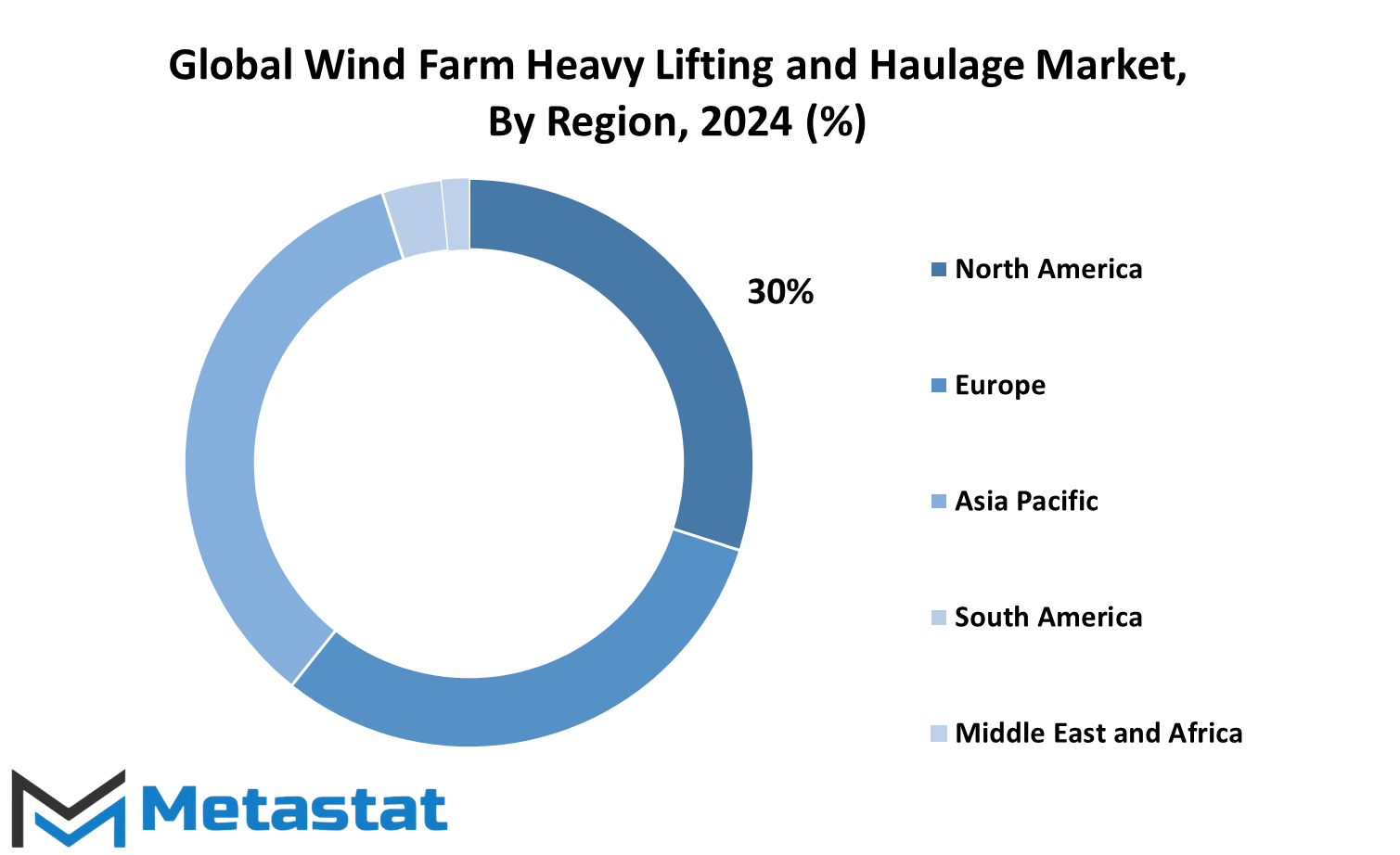
COMPETITIVE PLAYERS
The Global Wind Farm Heavy Lifting and Haulage market has also matured year after year as a business increasingly supporting a transition toward sustainable energy production. Demand for advanced lifting and transportation solutions in wind energy is expected to increase with further growth in the implementation of wind energy as a primary source of renewable power. These solutions ensure the transportation and installation of very heavy components such as turbine blades, towers, and nacelles with safety and efficiency in remote challenging locations. Companies offering specialized equipment and services in this sector will propel innovation and efficiency as the scale and complexity of wind farms continue to grow. The market is highly competitive with numerous players using expertise to manage the dynamic needs of an industry.
Mammoet is one of the pioneering companies, as it has strong engineering prowess, and Sarens is widespread throughout much of the world. Companies like these focus on technologies and infrastructures that will equip them well in handling these changes in wind projects. Broshuis and Nooteboom Trailers also focus on trailering solutions for large components that require transport over very long distances in specifically designed trailers for that purpose. This is because companies like CHINA HEAVY LIFT and Oriental Vehicles International play a particularly critical role as they respond to growing markets in Asia for wind energy, offering economical as well as innovative solutions. Rivalry Among Major Players Major Crane Manufacturers Manitowoc Company, Tadano Group, Zoomlion, SANY Group, and XCMG Group are still growing by making more technologically advanced cranes to lift massive loads required for the wind energy installation processes. They serve major markets since turbines expand in size to capture more energy and do this work more efficiently. Specialized Service Providers For example, Barnhart Crane and Rigging, Bigge Crane and Rigging, and the ALL Family of Companies-which specialize in a variety of services but pool the best logistical expertise with heavy lifting capabilities. From here onwards, sustainability and digitalization will be the foregrounds of competition for market leaders.
Modular transport equipment, automatic systems, and AI-driven project management tools can provide a new focus for the future. Offshore locations for projects will be the first opportunity for companies to assess and devise a strategy on how to mitigate the technical and logistical issues that come with a marine environment. These developing regions are where the business holds much promise for scalability and cost-effectiveness, in the context of the Global Wind Farm Heavy Lifting and Haulage market. Amongst these companies, the continuous improvement edge for any one of them to outperform the others will be the defining factor of success for that market leader in the years to come.
Wind Farm Heavy Lifting and Haulage Market Key Segments:
By Equipment Type
- Cranes
- Transport Vehicles
- Heavy-Duty Trucks
- Hydraulic Jacking Systems
- Platform Trailers
- Support Vehicles
- Tower and Blade Trailers
By Lifting Services
- Installation of Wind Turbines
- Maintenance and Repairs
- Dismantling and Decommissioning
- Component Replacement (Blades, Nacelles, Towers)
- Heavy Load Hoisting
- Offshore Wind Farm Lifting
- Rotor and Blade Installation
By Haulage Services
- Onshore Transportation
- Offshore Transportation
- Long-Haul Heavy Transport
- Customized Component Haulage (e.g., oversize blades)
- Cross-Country Haulage
- Equipment Mobilization
- Road and Port Logistics
By End User
- Wind Farm Developers
- Utility Companies
- Turbine Manufacturers
- EPC (Engineering, Procurement, and Construction) Firms
- Government and Municipal Agencies
- Independent Power Producers (IPPs)
- Service and Maintenance Providers
Key Global Wind Farm Heavy Lifting and Haulage Industry Players
- Mammoet
- Sarens
- Broshuis
- CHINA HEAVY LIFT
- Barnhart Crane and Rigging
- Bigge Crane and Rigging
- ALL Family of Companies
- Konecranes
- Manitowoc Company
- Nooteboom Trailers
- Oriental Vehicles International
- SANY Group
- Tadano Group
- XCMG Group
- Zoomlion
- VSL International Ltd.
WHAT REPORT PROVIDES
- Full in-depth analysis of the parent Industry
- Important changes in market and its dynamics
- Segmentation details of the market
- Former, on-going, and projected market analysis in terms of volume and value
- Assessment of niche industry developments
- Market share analysis
- Key strategies of major players
- Emerging segments and regional growth potential



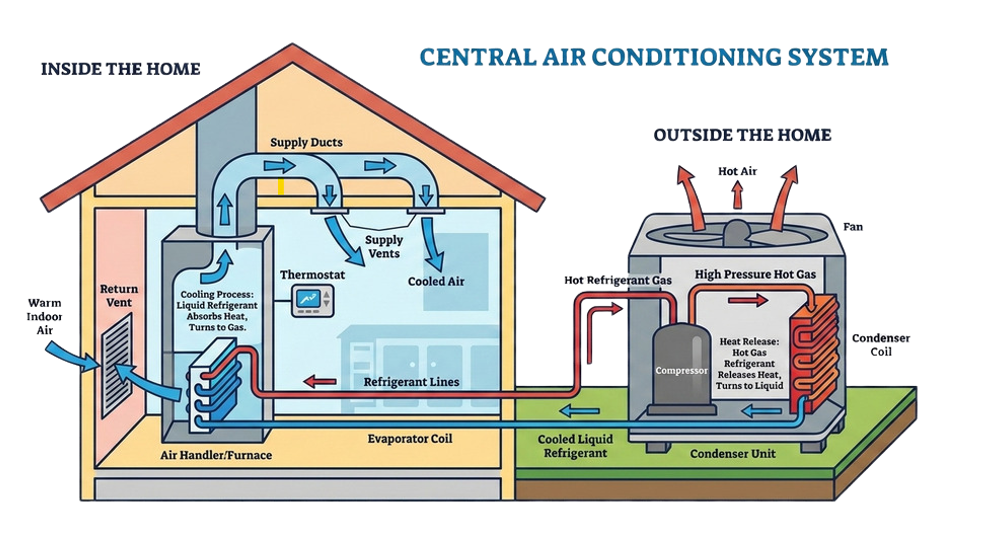
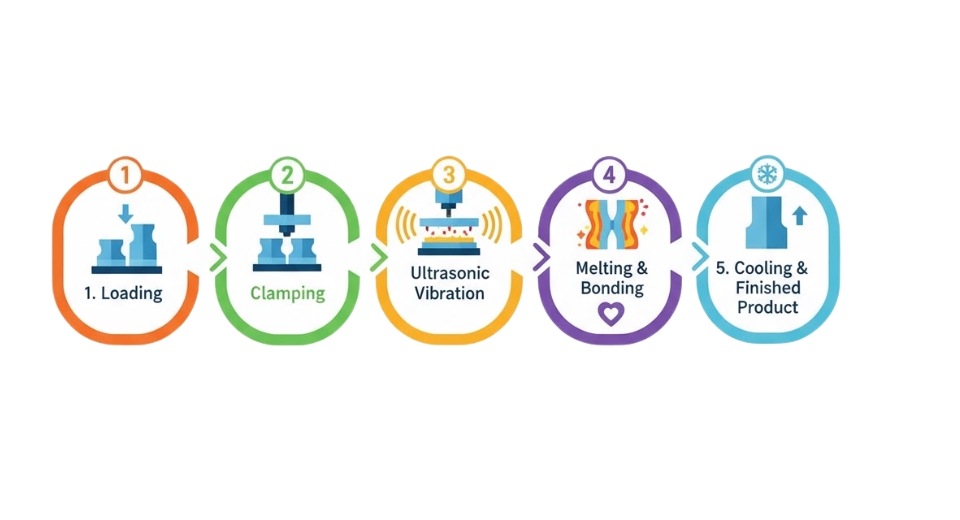
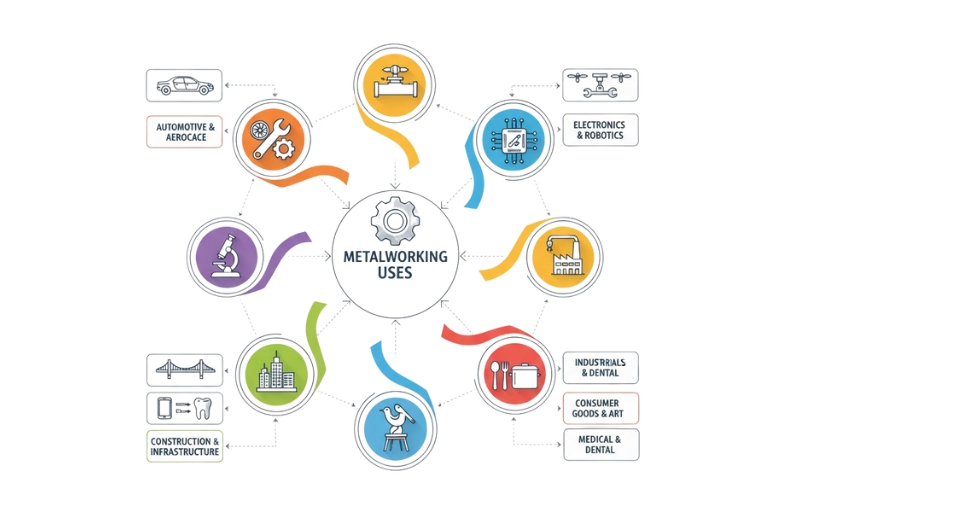
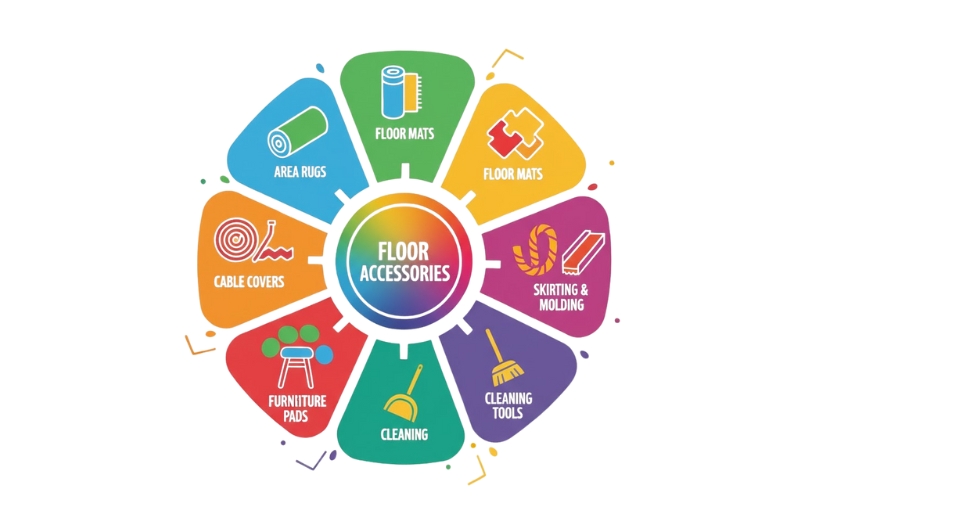

 US: +1 3023308252
US: +1 3023308252






